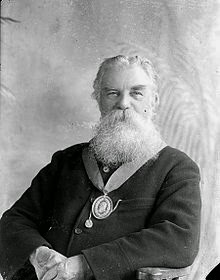Oxford is the county town of Oxfordshire and is set in South East
England. Oxford is famed for its university
and more recently form the “His darkmaterials” series of books by Phillip Pullman. The poet Matthew Arnold
coined the term “City of dreaming spires”.
This is a very good term as Oxford contains all manor English architectural
styles since the times of the Saxons and includes the famous Radcliffe Camera.
Don’t be fooled into thinking it is in fact a camera though, the word camera
comes from the Latin for room.
The origin for the city’s name may be held in its heraldic
shield. The elements on the shield of Oxford city first appeared in the 14th
century and suggest that it could be from a ford for crossing Oxen across the
River Thames, but the “Ox” name could
also come from a variant the old Celtic word that means water.
Some of the possible earliest photos taken in Oxford are by
William Henry fox Talbot in the 1840’s. Talbot made a great deal of
historically important photographs of Oxford, and across Britain.
"Fox Talbot reported his 'art of photogenic drawing' to the Royal Society. His process based the prints on paper that had been made light sensitive, rather than bitumen or copper-paper.Fox Talbot went on to develop the three primary elements of photography: developing, fixing, and printing. Although simply exposing photographic paper to the light produced an image, it required extremely long exposure times. By accident, he discovered that there was an image after a very short exposure. Although he could not see it, he found he could chemically develop it into a useful negative. The image on this negative was then fixed with a chemical solution. This removed the light-sensitive silver and enabled the picture to be viewed in bright light. With the negative image, Fox Talbot realised he could repeat the process of printing from the negative. Consequently, his process could make any number of positive prints, unlike the Daguerreotypes. He called this the 'Calotype' and patented the process in 1841. The following year was rewarded with a medal from the Royal Society for his work." http://www.bbc.co.uk/history/historic_figures/fox_talbot_william_henry.shtml

Another photographer that Oxford is famed for is that of Henry Taunt, born 1842, St Ebbe’s in Oxford. Henry had a series of photographic businesses around Oxford from 1868-1906 after wich he moved his work to his home on Cowley road.
Henry took photos around Oxford and the surrounding areas of
Oxfordshire and produced a a pocket guide of the Thames River, which was a
first of its kind that was to be illustrated using photographs rather than
artists impressions. Henry used the wet
Collodion process, invented by Frederick Scott Archer, to capture his images.
 |
| Henry Taunt on his floating studio near Oxford, Oxfordshire, 1895 |
Henry would set up his camera (tripod and dark tent), coat
his glass with chemicals to sensitize them. Then straight away make a 2 or 3
second exposure then develop and fix his plates and wash them off after in the
river. This is a fantastically difficult thing to do and being the 1860’s, an amazing
show of skill. .
 |
| Oxford High Street c1896, photograph by Henry Taunt |
 |
| My IPhone photograph of Main Street. |
I found Oxford to be crammed full of heritage, to the point I
had to go back to my car to recharge my phone and, whilst it was on charge, I
set off back on the streets hunting and exploring for new scenes to capture and
that I could return to once my phone was fully charged. The museums are amazing and full of wonders.
There are many, many layers to Oxford and it’s a joy to just wonder, snapping
away. I’m very sure that there are many
places I did not discover and hope to on further trips to Oxford. Each turn of
a corner is like stepping into another time or world. Oxford is I place of
wonders and a place the makes you wonder. You will never stop thinking “what’s
around that corner?”.
Written by Paul Hemming
For more ideas and ways to use Instagram Click HERE
For further reading and ideas for photography books
and related products please feel free to visit
Hover your pointer over left contents column then use your scroll wheel or button to view more posts.
Please feel free to leave any feedback below.






































No comments:
Post a Comment
Comments, feedback and questions.